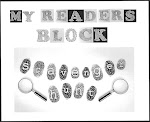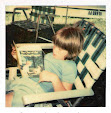This week's Historical Experts:
JJ @ The Invisible Event: A Background of History in The Red Widow Murders (1935) by Carter Dickson
Kate @ Cross Examining Crime: Christie, History & Mystery
The Puzzle Doctor @ In Search of the Classic Mystery Novel: Medieval Murders Part 1 1066 to 1327
Brad @ Ah Sweet Mystery Blog: The First Classic Mystery Case
Moira @ Clothes in Books: Pick a Year, Any Year...
****************************
And for my first offering, I thought I would lead off with a review of the book which inspired our November logo: The Murder of Sir Edmund Godfrey by John Dickson Carr. I read this one last April as the "Historical Mystery" selection for the Golden level of my Vintage Bingo Challenge.
 In
1678 a high-profile, well-known London magistrate named Sir Edmund
Godrey disappeared for five days. Last seen asking for directions to
Primrose Hill, he vanishes for almost a week amid cries that he has done
away with himself or, worse still, that the horrible "Papists" have
kidnapped him and possibly murdered him. Then his body is found lying in
a ditch with his neck broken, marks of strangulation by cord or neck
cloth, and run through by his own sword...on, of all places, Primrose
Hill. His chest is bruised and his body shows evidence of not having
eaten for two days. Where has he been for five days? How did he get
bruised? Why are his shoes polished and shiny when any path leading to
the hill would have been rain-drenched and muddy? Catholics are
eventually tried and executed for the murder, but it is impossible to
believe that a "Papist Plot" really called for the death of Godfrey. If
innocent men did pay for the crime, whose account should have been
charged? John Dickson Carr examines the historical evidence and the
theories of various historians and other interested parties to weave a
fictionalized account of the crime.
In
1678 a high-profile, well-known London magistrate named Sir Edmund
Godrey disappeared for five days. Last seen asking for directions to
Primrose Hill, he vanishes for almost a week amid cries that he has done
away with himself or, worse still, that the horrible "Papists" have
kidnapped him and possibly murdered him. Then his body is found lying in
a ditch with his neck broken, marks of strangulation by cord or neck
cloth, and run through by his own sword...on, of all places, Primrose
Hill. His chest is bruised and his body shows evidence of not having
eaten for two days. Where has he been for five days? How did he get
bruised? Why are his shoes polished and shiny when any path leading to
the hill would have been rain-drenched and muddy? Catholics are
eventually tried and executed for the murder, but it is impossible to
believe that a "Papist Plot" really called for the death of Godfrey. If
innocent men did pay for the crime, whose account should have been
charged? John Dickson Carr examines the historical evidence and the
theories of various historians and other interested parties to weave a
fictionalized account of the crime.
I started out thinking that The Murder of Sir Edmund Godfrey (1936) by John Dickson Carr should be filed under historical fiction/mystery. By the time I finished, I realized it is more accurately fictionalized history. Carr makes no claim that his telling of the story and the final solution is the unassailable historical truth, but he does set himself the task to be historically accurate while entertaining the mystery lover. He says in the "Preface for Connoisseurs in Murder:
That this is the true solution, of course, nobody would be presumptuous enough to declare. It is merely the solution which, while trying to meet with the full requirements of the historian, shall also meet with the requirements of the Society of Connoisseurs in Murder....This record does not presume to be history, except insofar as it tries to be true.
I thought it quite possible that some of my Vintage Mystery Challengers might cry "foul" when I claimed this for the historical mystery category on the Golden Bingo Card. But Carr himself tells us that he is attempting to meet all the standards of detective fiction while giving as accurate a historical record as possible and who was I to argue with one of the masters of the field?
It is quite obvious that Carr has done his research. He not only gives us what he believes to be the solution to the ultimate questions--Who killed Sir Edmund Godfrey and Why--but he also supplies the reader with eleven other possible solutions complete with historical details that might lead one to at least consider them if not actually believe them. The historical detail accurately brings to life a bawdy, brutal time period full of plots and counter-plots. He informs us of all we need to know about the reign of King Charles II. I have no quibble there and if I were to rate this book on historical accuracy and interest alone, then there is no doubt that it would earn 4 1/2 to 5 stars. But...
Carr makes the claim that the murder of Godfrey is "a very nearly perfect mystery story" (emphasis mine). And, here, for me, this book falls short. Perhaps it is the deluge of historical novels in the last decade or two that has spoiled me--breathing life into historical characters of all sorts from queens and presidents to Thomas De Quincey and Noah's wife. Carr's book, after all, is one of the very first fictional retellings of true crime and, so, is an early venture into this genre. But loving Carr's detective fiction as I do, I expected more entertainment--or at the very least to be entertained while he was providing all the historical background for Charles II's reign and his Opposition and the "Papist Plot"...etc. I never completely felt like I was reading a story. It was very much like reading a history of the events--lots of telling what happened rather than allowing the actors to take the stage, act out the drama, and speak their lines.
And even though Carr says (again in the preface) that there should be "no nods or elbow-joggings from the author" there are moments where it seems as though there is just a bit of a wink and a nudge...little do these historical figures know, but we know....For example, when Sir Edmund Godfrey's body is found and the men are carrying news to the local magistrate, Carr notes: "They did not know, at the moment, that the sword had been thrust through the body of a man already dead from being strangled." There aren't many of these instances, but they are there and they serve to distance the reader from the story. We are no longer caught up in the tale as it happens because we have knowledge that the players do not.
Overall, a very detailed look at an interesting moment in history and a convincing argument for the murderer of choice. Carr is very good, as always, with his explanation of the crime. The foreward and afterward in my edition by Douglas G. Greene are gems--excellent and informative framework for Carr's historical narrative. But adding my personal dissatisfaction with the story-telling element.... ★★★ and a half.






























1 comment:
Given the Carr-nut I proclaim to be, it's to my shame that I'm yet to purchase this, because it sounds awesome. I like to think this was a litle bit of stretching to see what could be achieved in the historical mould before actualy taking on a completely fictionalised crime in a real milieu...if he had some of the framing there already, what could his fertile brain do with it? It's far from perfect, I know, and by the sounds of it he makes a few leaps that don't necessarily hold...but then I don't know how seriously he intended his solution to be taken. I'll be able to comment more fully when I track down a copy...!
Post a Comment